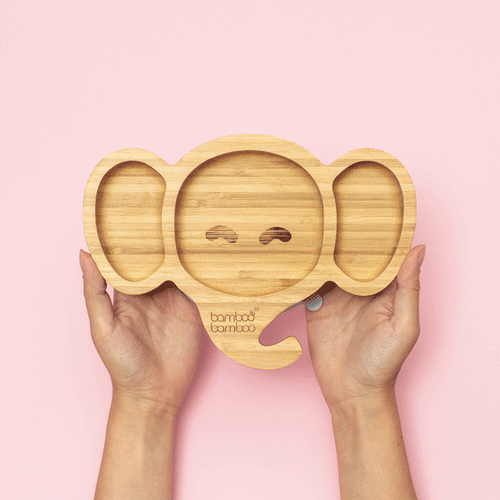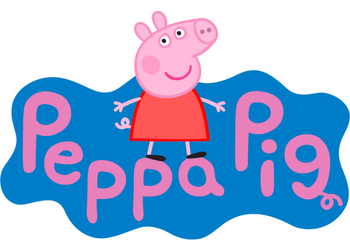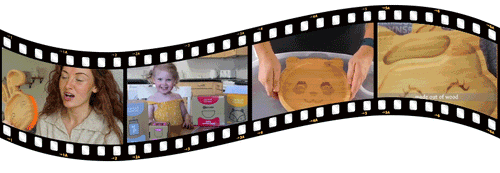Who doesn’t love a good chocolate bar from time to time? Well … people with chocolate allergies. They’re rare, but they affect about 0.5% of the population.
So when it’s time to introduce solid foods to your baby, you might worry about whether they’ll react to treats like:
- Brownies
- Cakes
- Chocolate-covered fruits
- Cookies
- Ice cream
- Milkshakes
- Pudding
- And more
Chocolate allergies are tough to spot. This is because many chocolate foods also contain other allergens like milk and nuts. Plus, sometimes allergy symptoms and food intolerance symptoms look a lot alike.
But if your child has a true chocolate allergy, they’re allergic to proteins found in cocoa solids/butter. You should start to notice signs of food allergies show up as your baby reaches 4 - 11 months of age.
Even though chocolate allergies in children aren’t curable, they’re manageable. There are many ways to prevent and treat chocolate allergies in children. And there’s a chance your child may grow out of it with age.
In the meantime, it’s important you learn about symptoms, treatments, and top foods to avoid.
Here’s what you’ll learn inside this guide:
- Signs and symptoms of a chocolate allergy in babies
- When to call 911 for a chocolate allergy
- Top foods to avoid if your baby has a chocolate allergy
- Preventing and treating baby chocolate allergies
- How to diagnose chocolate allergies in babies
- Chocolate allergy vs. chocolate intolerance
- FAQ: Everything you need to know about baby chocolate allergies
Signs and Symptoms of a Chocolate Allergy in Babies
A chocolate allergy is an immune system response. When your child eats chocolate, their body thinks it’s an intruder. So their immune system sends out antibodies to fight off the “attack.” And symptoms show up when the antibodies start attacking.
You’ll notice allergy symptoms show up within a few minutes or hours after they eat chocolate. They range from mild to severe:
Mild chocolate allergy
- Runny nose and/or congestion
- Coughing and/or sneezing
- Itchy or red skin
- Nausea
Moderate chocolate allergy
- Hives or raised red bumps on the skin
- Chocolate allergy rash
- Swollen and/or itchy lips or mouth
- Some vomiting
- Some diarrhea
Severe chocolate allergy
- Shortness of breath
- Wheezing
- Difficulty swallowing or severe swelling
- Anaphylaxis (rare)
When to Call 911 for a Chocolate Allergy
Food allergies can result in mild to severe reactions, so it’s important you know when to call 911. Watch your child’s reaction closely and look for signs like:
- Shortness of breath
- Difficulty breathing
- Wheezing
- Stopped breathing
- Severe swelling of the mouth, lips, tongue, throat, or face
- Severe cramping and/or abdominal pain
- Fast pulse
- Low blood pressure
- Loss of consciousness
- Severe symptoms affecting two or more parts of the body (i.e. wheezing and cramping)
A severe reaction like this is called anaphylaxis, and it’s a medical emergency. In some cases, it’s life-threatening.
Remember: If you notice the signs of anaphylaxis, call 911 immediately.
If you have an auto-injector (EpiPen®), administer it to manage their symptoms. You can also give them over-the-counter (OTC) antihistamines or allergy medications to help. And make sure to keep an eye on them in case the second wave of symptoms occurs.
Always get medical care if your child has a severe allergic reaction. Even if their symptoms go away after a few minutes, talk with your baby’s doctor.
Top Foods to Avoid if your Baby has a Chocolate Allergy
The easiest way to manage your child’s chocolate allergy is to avoid the food altogether. Here’s a quick list of foods that commonly contain chocolate or cocoa:
- Baked goods with chocolate ingredients (brownies, cookies, etc.)
- Candy bars
- Chocolate-covered fruit
- Chocolate-flavored ice cream
- Chocolate milk
- Cocoa butter and cocoa powder*
- Crepes, pancakes, and waffles with chocolate ingredients
- Dark chocolate
- Jams and marmalades with chocolate ingredients
- Milk chocolate
- Milkshakes
- Mole sauce
- Pectin
- Pudding
- Some coffee beverages and flavorings
- Some medications (laxatives)
- Some packaged snacks
- Some soft drink flavorings
- Hot cocoa*
If you still want your child to enjoy sweet treats, here are some common chocolate substitutes to try:
- Almond butter
- Carob or carob powder (it’s a type of legume)
- Fruits
- Sugar and butter mixtures
- White chocolate (if it’s free of chocolate ingredients)*
Talk with your doctor about what’s best for your child and their allergy. It’s possible that foods not listed in the tables above contain chocolate. So always be sure to check food labels, even if it’s food your child has eaten before.
It's also possible symptoms stem from other ingredients commonly found in chocolate foods. For example, many baked goods, candy bars, and sweet treats also contain allergens like:
- Nuts
- Sugar
- Milk
- Gluten
- Caffeine
- Eggs
- Soy
- Food colorings and additives
- Cocoa*
* Chocolate, cocoa, and cacao aren’t exactly the same. So it’s possible that, for example, your child is allergic to chocolate, but not solid cocoa. Here’s the difference between each one:
Cacao
- Unroasted, raw, and (usually) whole beans
- Can also be a paste, butter, or powder
Cocoa
- The dry, solid remains of roasted cacao beans (after the butter is taken out)
- Usually a powder
Chocolate
- Made with cocoa solids and cocoa butter
- Unsweetened chocolate: Pure cocoa solids and butter (nothing has been added)
- Dark, bittersweet, or semisweet chocolate: Cocoa solids, cocoa butter, and sugar
- Milk chocolate: Cocoa solids, cocoa butter, sugar, and milk or condensed milk
- White chocolate: Cocoa butter, sugar, and milk or condensed milk
Preventing and Treating Baby Chocolate Allergies
Although some babies outgrow their chocolate allergy, allergies aren’t curable. They either go away with age, or they don’t. So until you find out whether your baby will outgrow their allergies, it’s up to you to manage their symptoms. Here are some common ways parents and caregivers can treat chocolate allergies:
| Allergy action plans |
|
| Medications |
|
| Food label monitoring |
|
How to Diagnose Chocolate Allergies in Babies
If you believe your baby has a chocolate allergy or sensitivity, talk to a doctor. They’ll be able to identify whether chocolate causes their symptoms. And they’ll be able to help you develop a treatment plan.
Here are some common ways medical professionals diagnose chocolate allergies in babies:
Skin test
- Your child’s doctor or allergist applies a chocolate allergen to the skin
- Small pricks then expose your baby’s skin to the chocolate allergen
- If your baby reacts (for example, develops a rash), there’s a strong chance they have a chocolate allergy
Blood test
Elimination diet
Elimination diets have the power to reveal what your child is allergic to. This includes other ingredients often found in chocolate foods.
For example, your child may be allergic to cacao, cocoa, nuts, milk, or wheat. Or, they might be sensitive to the caffeine found in chocolate.
Chocolate Allergy vs. Chocolate Intolerance
Although they’re similar, chocolate allergies and chocolate sensitivities are different. If you’re allergic to chocolate, your immune system releases histamine when you eat it. Histamine is a chemical that causes physical symptoms like:
- Vomiting
- Shortness of breath
- Swelling of the throat, tongue, lips, or face
- Hives
- Cramps
- Runny nose or congestion
- Itchy tongue, mouth, or ears
- Diarrhea
And in some cases, you may develop anaphylaxis. It’s a life-threatening condition that requires immediate care. Anaphylaxis is usually with an auto-injector and/or emergency attention.
A chocolate intolerance (or sensitivity) is different from an allergy. This is because intolerances don't trigger antibodies. Instead, your reaction could be caused by one of the following:
Your body’s digestive system can’t break down certain proteins found in chocolate Your body can’t digest other ingredients found in chocolate like amino acids Eating chocolate triggers your immune system, but antibodies aren’t released
People who have chocolate intolerances usually experience:
- Bloating and/or gas
- Constipation
- Headaches
- Acne
- Skin rashes
- Upset stomach
On the other hand, it’s possible you’re sensitive to the caffeine content in chocolate. A caffeine reaction usually looks like:
- Fast or uneven heartbeat
- High blood pressure
- Headaches
- Dizziness
- Shakiness
- Trouble sleeping at night
If you aren’t sure whether you have an allergy or intolerance, talk with a doctor. They’ll be able to help identify which condition you have and how to treat it.
Did you know? There’s an overlap between nickel allergies and chocolate allergies. Some chocolates (dark, milk, and cocoa powder) contain high amounts of metal nickel. And about 15% of the population is allergic to nickel.
Check with your child’s doctor to find out if they’re allergic to the nickel that’s found in some chocolate foods.
Explore Other Most Common Foods Causing Allergies in Babies
FAQ: Everything you need to Know about Baby Chocolate Allergies
Is chocolate intolerance the same as a chocolate allergy?
Chocolate allergies and intolerances look a lot alike. That’s why it’s so hard to tell one from the other. Here’s a quick breakdown of each one and how it’s unique:
Chocolate intolerance
- Doesn’t trigger antibodies
- Has less severe symptoms
- Primarily impacts the digestive system
Chocolate allergy
- Triggers antibodies
- Can be life-threatening in some cases
- Impacts many different parts of the body, not just the GI tract


















